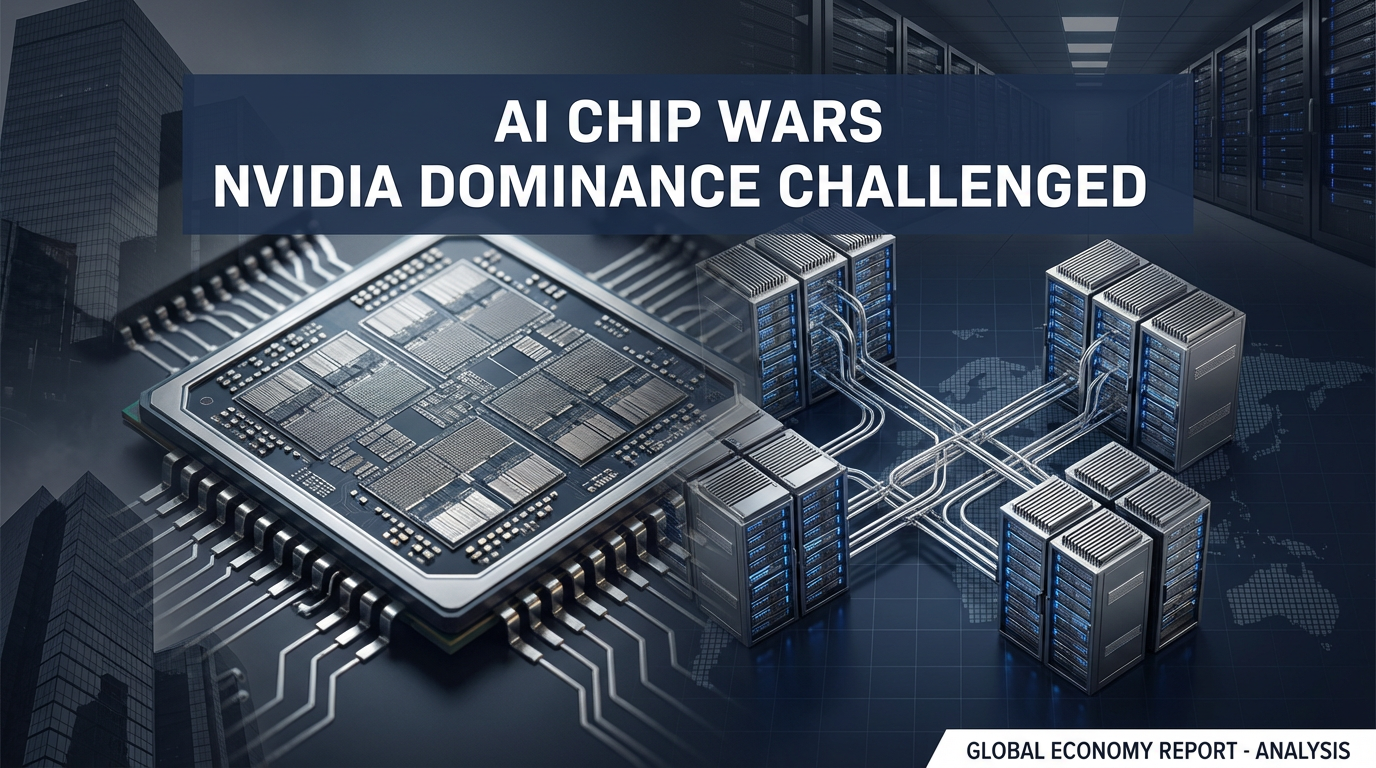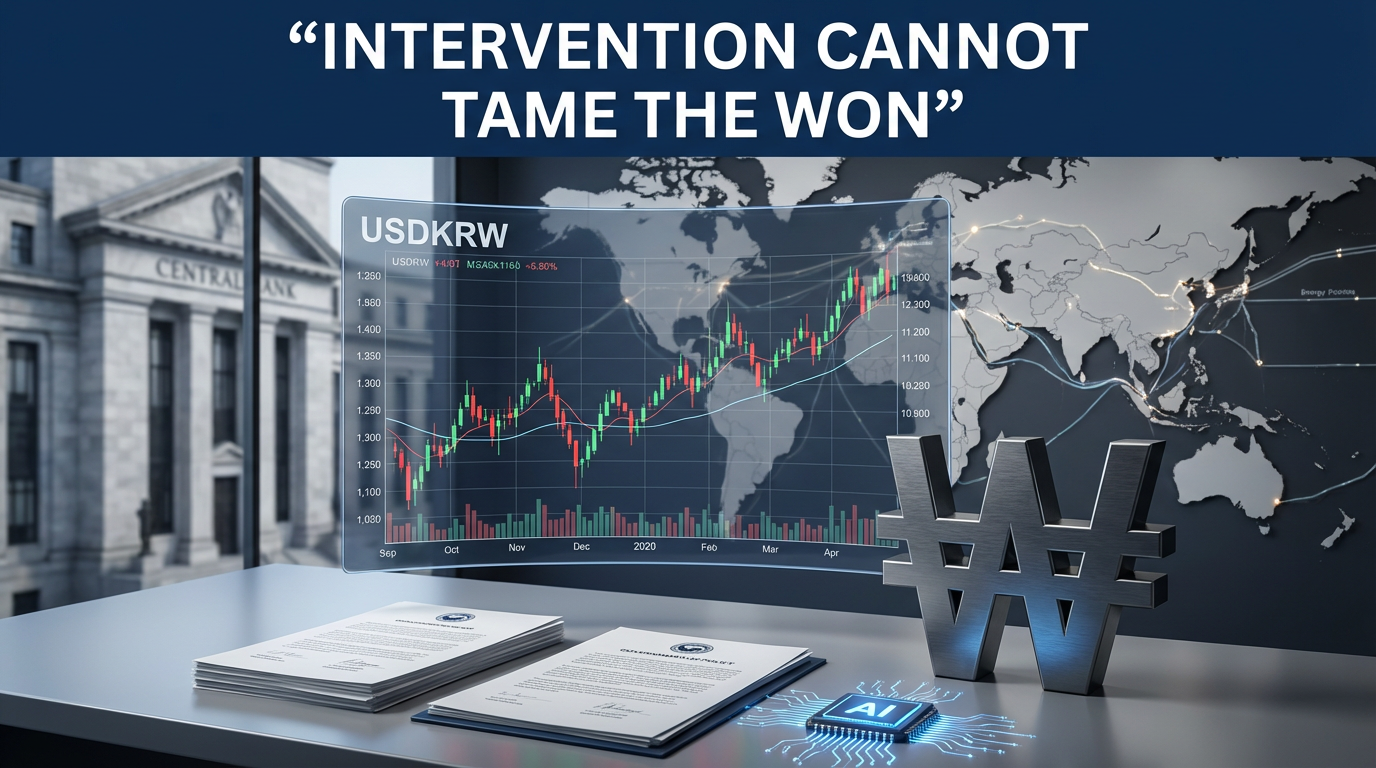● Burry Warns AI Bubble, Depreciation Scam, Capex Timebomb
Michael Burry’s Counterattack: The AI Bubble, the Illusion Created by ‘Depreciation’ and the Truth of Data Center CAPEX
My article contains exactly three points.
First, it explains, with figures and mechanisms, how Burry’s criticism of the ‘GPU depreciation useful life’ inflates Big Tech profits.
Second, it examines from the perspective of actual operating infrastructure how Nvidia’s annual new product roadmap (Hopper → Blackwell → Rubin) creates seismic effects on data center design and residual value.
Third, it outlines scenarios on how the as-yet unexpensed “construction-in-progress assets (CIP/CP)” and the risks from power and cooling redesign could trigger a revaluation in the stock market.
When connected with global economic trends, interest rates, inflation, the stock market, and recession risks, the overall direction becomes clear.
News Briefing: What Is Happening in the Market Now
Burry claims that “Big Tech has inflated short-term profits by extending the useful life for GPU depreciation.”
Nvidia counters by saying that customers still use chips that are 4–6 years old, but Burry retorts, “Do not confuse the fact that they are still in use with the fact that they are profiting.”
Nvidia has officially outlined annual generation changes with Hopper (H100), followed by Blackwell (GB200) and Rubin.
If a new generation is improved every year, the economic depreciation of existing chips accelerates.
Alphabet improved its pre-tax profit by approximately $3.9 billion in 2023 by extending the effective depreciation life.
Satya Nadella of Microsoft explained the temporary halt by saying, “We did not want to build a data center dependent on a single generation.”
Burry believes that if the appropriate useful life is assumed to be 2.5–3.5 years, net profits might have been overstated by 13–48%.
While data center buildings, power, and cooling facilities are depreciated over 10–15 years, the shift to immersion cooling and changes in power density increase the likelihood of early obsolescence.
A buildup of CIP (construction-in-progress) assets that have not yet begun depreciation suggests the potential for a cost explosion in the future.
All these variables, aligned with the global economic environment’s trajectory of interest rates, inflation, and power prices, could trigger a re-rating of Big Tech valuations.
Burry’s Core Argument: The Illusion of Profits Created by the ‘Useful Life’ of Depreciation
The core is simple.
By extending the useful life, annual expenses are reduced, which inflates short-term profits.
It is similar to dividing a 1,000,000 won smartphone over 4 years instead of 2, thus reducing the annual expense from 500,000 won to 250,000 won.
Applying an accounting policy that uses 6 years instead of 3 years for GPUs produces the same effect.
The problem is that with Nvidia’s chip generation changing on a yearly basis, the environment forces the ‘economic useful life’ to actually shorten.
Therefore, a 5–6 year depreciation period is widely criticized for being mismatched with market realities.
Nvidia vs. Burry: The Separation of Physical Lifespan and Economic Value
Nvidia stated, “Chips that are 4–6 years old are still being used.”
Burry responded, “Do not confuse the fact that they still work with them making money.”
If Blackwell significantly boosts energy efficiency and Rubin enhances speed, older chips may quickly fall behind in terms of performance per watt relative to power costs.
Ultimately, the residual value of second-hand GPUs will rapidly depreciate, driven by power cost, performance per watt, and the level of support for the latest software optimizations.
This is a factor that effectively shortens the equipment’s ‘economic useful life.’
Hyperscaler CAPEX and Cash Flow: The Structure Has Changed
It is estimated that Big Tech’s data center investments could reach $3 trillion over the next three years.
This sum surpasses their aggregated free cash flow and serves as a factor for a valuation re-rating in the stock market.
Alphabet improved its profit by altering its depreciation policy, and Microsoft acknowledged that it has “transitioned to a capital-intensive business.”
There is a convergence where a shift from a software model to a manufacturing-type cash flow structure is emerging.
High interest rates impose a greater discount factor on capital efficiency in capital-intensive industries.
Option Position Update: Burry’s Short is a ‘Put Option’
Burry purchased puts with a December 2027 expiry for Nvidia with a strike price of $110.
He disclosed an entry price of approximately $10.001, and as of November 27, the option price was $11.15, showing roughly an 11% profit margin.
Palantir’s puts, expiring in January 2027, were bought at $1.84 with a current price of $2.56, achieving about a 39% profit margin.
Due to leverage and significant time value, options are very sensitive to volatility and carry substantial risk of loss.
Short-term evaluation profits do not guarantee long-term performance.
Recalculation of Profits and Losses: What Changes with a Useful Life of 2.5–3.5 Years
Burry assumed an economic lifespan for GPUs of between 2.5 and 3.5 years.
Under this assumption, the net profit of major Big Tech companies is estimated to have been overstated by 13–48%.
Consequently, there is a high likelihood of asset impairments and downward adjustments of residual values amounting to billions of dollars.
In the stock market, this could lead to multiple compression and guidance risks.
The Hidden Pitfalls of Data Centers: Generation Changes in Power, Cooling, and Cabling
The rapid shift from traditional air cooling to immersion cooling completely alters the design of racks, power buses, and cooling loops.
Power density metrics per rack and per row change, and cables require re-rigging for high bandwidth and low latency.
A depreciation period of 10–15 years for buildings is misaligned with reality, and equipment designed for a specific generation may become prematurely “stranded.”
Ultimately, there is a risk that assets will increasingly turn into ‘zombie centers’ that only generate low value.
The Unaccounted Cost of ‘CIP/CP’ Bomb
Construction-in-progress assets have not yet begun depreciation since they have not been put to use.
Once completed, a large-scale depreciation could be reflected on the income statement all at once.
Big Tech’s CIP balance may act as a landmine, increasing earnings volatility at the tail end of the investment cycle.
Macro Connections: Valuations Determined by Interest Rates, Inflation, and Power Prices
High interest rates increase the weighted average cost of capital for capital-intensive industries, lowering their multiples.
When inflation is reflected in power rates and equipment prices, the total cost of ownership (TCO) increases.
As recession fears grow, securing AI spending from customers slows down, widening the gap between cash generation and CAPEX timelines.
The stock market will reprice Big Tech’s growth-margin balance based on these variables.
Market Scenarios: Three Tracks
Bullish scenario.
AI monetization happens faster than expected, and while power and cooling conversion costs are absorbed, changes in depreciation remain limited.
Neutral scenario.
CAPEX is maintained, but shortened useful lives and some asset impairments lead to more conservative multiples.
Bearish scenario.
Delayed monetization combined with a surge of CIP completions results in large-scale cost recognition, cash flow pressures, and pronounced valuation compression.
Key Points Rarely Discussed in Other News
The costs associated with power and cooling redesign can have a greater impact on residual value than the drop in GPU prices.
If, during generation change, the software optimization stack reduces support for older chips, the economic useful life could be even shorter.
The liquidity of the second-hand GPU market is driven by power costs and space expenses, and a mass sell-off could lead to a sharp plunge in prices and recovery rates.
The greater the gap between tax depreciation and economic useful life, the more decoupling there is between accounting profits and cash flow.
The timing of converting CIP to in-use assets can create quarterly earnings surprises or shocks.
Difficulties in securing power and carbon costs will create structural disparities in the value of data centers by region.
Investment Checklist: What to Check Before the Numbers
Review each company’s IR announcements regarding changes in depreciation policies and the scope of affected assets.
Track the fluctuations and completion schedules of CIP.
Monitor indicators of changes in data center design, such as GPU generation roadmaps, power density, cooling methods, and rack redesign.
Distinguish between the quality of AI revenue (Quality of Revenue), inference utilization, and unit price trends.
Also check the mix of private credit and corporate bond financing as well as interest rate sensitivities.
A key factor is how quickly the FCF margin recovers after the CAPEX peak-out.
Risks and Counterarguments: Reasons Why Burry Might Be Wrong
Software optimization, along with quantization and sparsity, could extend the lifespan of older chips.
A shift to inference workloads might encourage the redeployment of older GPUs.
The secondary market combined with co-location and differences in national power rates could help defend residual values.
If AI monetization occurs faster and on a larger scale than anticipated, it could offset depreciation costs.
Nonetheless, short-term structural de-risking of valuations is not easy.
Conclusion: A Battle of Duration, But Ultimately, Fundamentals Depend on Timing
The greater the gap between the CAPEX peak and the timing of monetization, the more the market will suffer.
Depreciation policies, CIP conversion, generation change speeds, and power and cooling variables all affect this timing.
In the long term, the total demand for AI appears robust, but in the short term, accounting and cash flow variables can shake stock momentum.
Holding positions for the long term while adopting a defensive approach triggered by announcements on accounting policies and signals from power and cooling design is prudent.
Investments are your own responsibility, and this article is provided for the purpose of investor education.
< Summary >
Burry points out that “extending the useful life for depreciation has inflated short-term profits,” while arguing that the actual economic life is much shorter due to accelerated generation changes.
The comments and policies from Alphabet and Microsoft confirm the risks of a ‘capital-intensive transition’ and ‘generation dependency.’
Once CIP is completed, a bulk of costs may be recognized simultaneously, and power and cooling redesigns could accelerate the obsolescence of buildings and facilities.
The market impact will vary according to the paths of interest rates, inflation, and power prices, and short-term multiple compression should be kept in mind.
[Related Articles…]
The Truth Behind the AI Bubble Illusion: How Depreciation is Changing Big Tech Profit Structures
Data Center CAPEX and Interest Rate Risks: The Cost Dynamics of Power and Cooling Transitions
*Source: [ 내일은 투자왕 – 김단테 ]
– 마이클 버리의 반격. AI 버블 붕괴를 다시 외치다.


